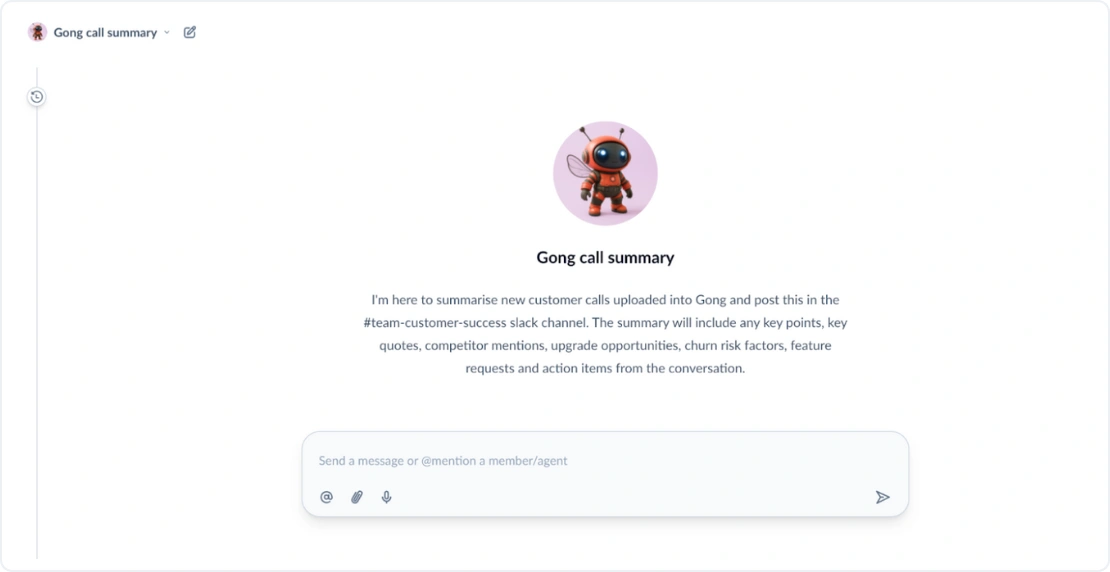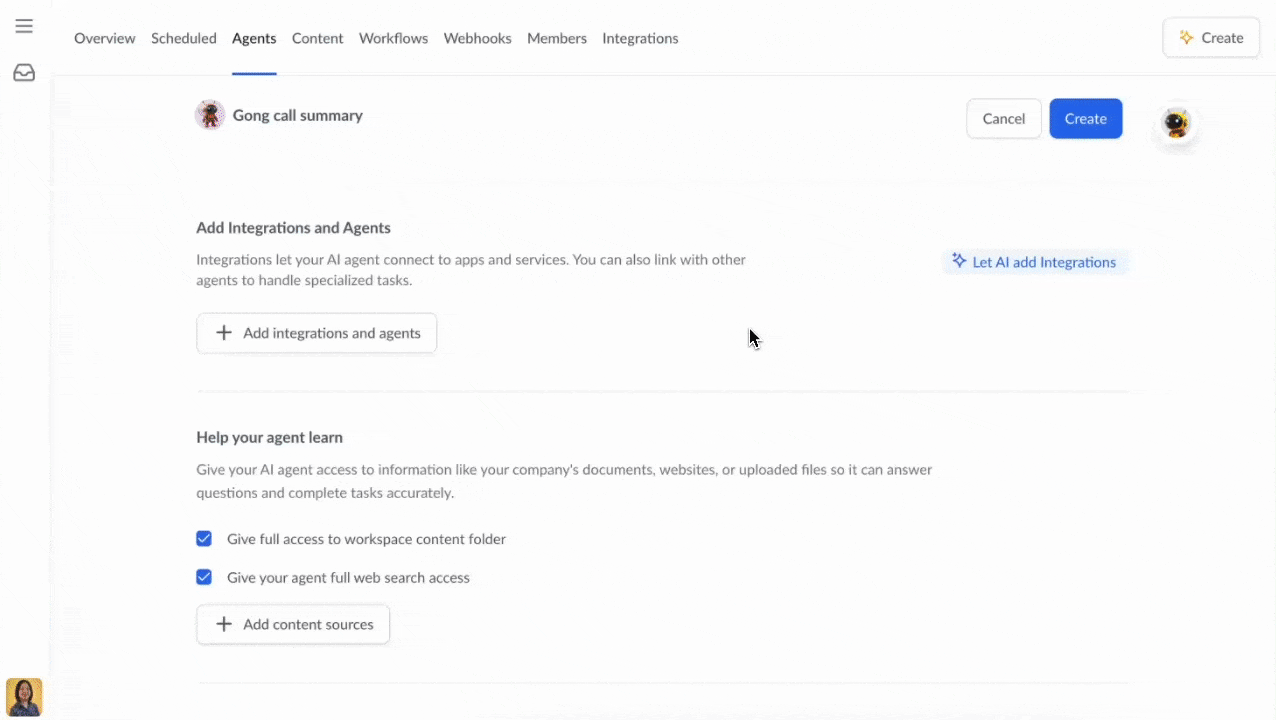How to overcome the imagination barrier in AI adoption
You have everything you need - almost The technology to transform your business with AI is already here. The tools are powerful, accessible, and more …
Read article
For Nadia Ostrowski, a Customer Success Manager at Raygun, sifting through Gong call recordings was a weekly time sink. By building a simple AI agent in Autohive, she automated the entire process, turning hours of manual analysis into instant insights.
We’ll let Nadia walk you through exactly how she did it.
For every customer call, my follow-up workflow looked something like this:
With several important calls happening every day, I could spend hours just on this one task.
When the Gong integration was added to Autohive, it made me think.. What if Autohive had direct access to the Gong call transcripts and could complete all of the above for me?
Using Autohive, I built a specialized AI agent I call the “Gong call summary” agent.
Its purpose is simple, but incredibly effective - to act as an autonomous member of Raygun’s Customer Success team.
The agent monitors Gong for new call recordings. Once a call is uploaded, the agent gets to work. It analyzes the entire call transcript and generates a structured summary, which it then automatically posts to our #team-customer-success Slack channel. This result is a well-organized summary available to my entire team.

Replicating this workflow is easy (coming from a not-so-tech-savvy individual)! Here’s how you can do it:
This is the first step to connecting your Gong account to Autohive.

In Autohive, you’ll create a new agent. You can give it a name, such as “Gong Analyst,” and an avatar to make it feel like a genuine part of your team.
This is the most important part. You’ll give your agent a prompt that tells it exactly what to do. You can customize this to fit your exact needs. I used the instructions below and included an example.
“Summarise new customer calls uploaded into Gong and post this in the #team-customer-success slack channel (channel ID). The summary will include any key points, key quotes, competitor mentions, upgrade opportunities, churn risk factors, feature requests, and action items from the conversation.
EXAMPLE:
Nadia from Raygun hosted a general training session for Bob at Company X, focusing on how to be more proactive rather than reactive in Raygun. Bob noted that they really want to stay on top of any errors or customer issues before they become too big or before the customer reaches out to them. Nadia walked through helpful workflows (sorting inbox by users instead of count, permanently ignoring errors, alerting, etc.). Bob did express concern that there could be too many alerts which of course is overwhelming but when Nadia showed him that you can add tags and filters to alerts and assign to specific teams based on that he loved this. Overall, the call went well, and the customer is very happy with Raygun.
Key Quotes: - “One goal of mine is, I’d like to start being a bit more proactive about these error reports rather than just responding to the tickets when they come in from customers and addressing those key ones. It won’t be all of them. You know, I’m realistic, it’ll never be worth fixing every single one. But if we can capture the low-hanging fruit, those ones that are affecting, you know, say a 1,000-plus users, then that’ll put us in a much better position, so that’s the current number one.”
- “So if we can have alerts based on those delicate clients, that’s actually really helpful because we have one at the moment that we’re testing some changes. So this would be incredibly useful.”
- “…RUM could be quite useful to some of the projects we have coming up.”
- “I mean to be honest, I don’t know how I’ve just been ignoring the user’s part… all along. Because that’s incredibly powerful and answers a lot of questions for us over prioritization. So that alone has been fantastic.”
Next Steps: - Raygun to touch base with Bob for another training call once he has had time to familiarize himself with his Raygun account and check out the recommended workflows. -Organise time with the wider team for a specific session dedicated to RUM, to identify the slow load pages and how the team can improve them.”
You can configure the agent to be triggered by a webhook from Gong for real-time summaries or set it on a schedule (e.g., every hour) to check for new calls.
All done!
A key tip is to start simple and refine your approach. My first version was good, but I tweaked the prompt a few times to get the output exactly right.
Route alerts: Use different prompts to send summaries of sales calls to a #sales-wins channel and technical support calls to an #engineering-feedback channel.
Create tasks: Integrate with a tool like Hubspot to automatically create tasks and reminders based on the “Next Steps” identified in the call.
Enrich CRM data: Have the agent update contact or account records in your CRM with a summary of the latest conversation.
Automating Gong call summaries has been a game-changer. It has already saved me so many hours, eliminating major administrative bottlenecks.
My goal is to build a whole team of AI agents in Autohive for Customer Success. Each handling a different task, freeing up my team to focus on high-impact, strategic work.
My next goal is to get to work on the following Agents using Gong:
1. Competitive Intelligence Agent: An agent that monitors competitor mentions across all customer interactions and tracks wins/loss patterns
2. Expansion Opportunity Scout Agent: An agent that identifies upsell signals from customer conversations, tracks feature requests and use case evolution. The agent will then create automated expansion campaigns for CSMs.
If you’re overwhelmed with manual tasks and looking for a way to reclaim your time, I highly recommend Autohive. Connect your favorite apps, build your first agent, and discover for yourself the power of automation.
You have everything you need - almost The technology to transform your business with AI is already here. The tools are powerful, accessible, and more …
Read articleAI is everywhere in marketing—88% of marketers use it day-to-day (SurveyMonkey, 2025) but nearly half of us (43%, SEO.com 2025) aren’t totally sure …
Read article